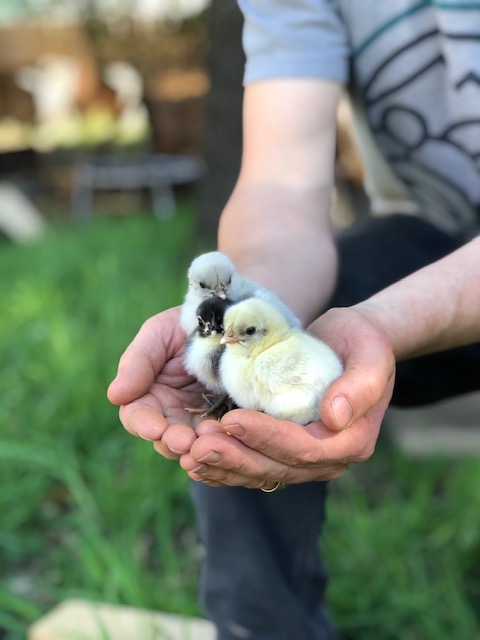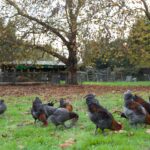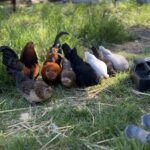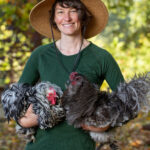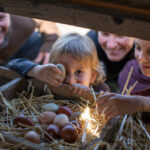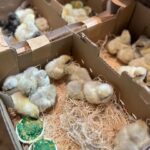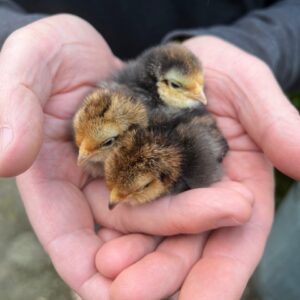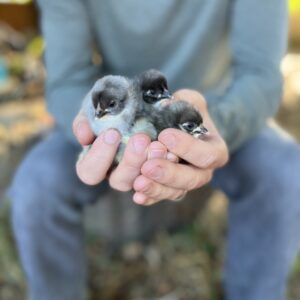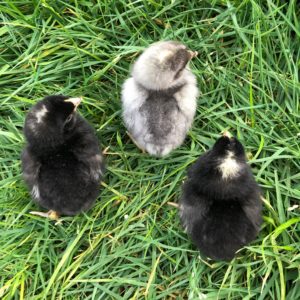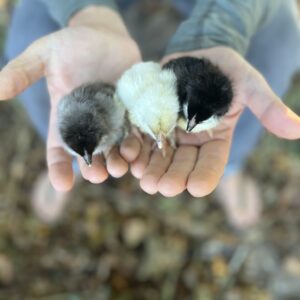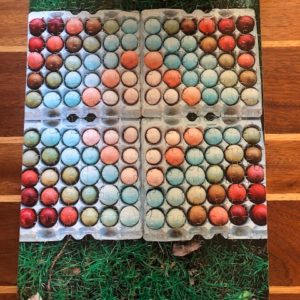Baby chicks, like all birds, have a unique anatomy that is adapted for their survival and growth. It is fun to see them shift and change over each week. For the first few weeks of life here are the different visible body parts of a baby chick:
- Beak: The beak of a baby chick is a sharp and pointed structure that is used for pecking and foraging. In the first three days of life the beak will also have an egg tooth attached to it which is a hard extra piece to the beak which helps the chick break out of its shell. The egg tooth falls off naturally.
- Eyes: Baby chicks have large, round eyes that are located on either side of their head. They are equipped with excellent vision that helps them find food and stay safe. Fun fact: a chickens eyeballs do not move, instead they have to turn their head to see – this is why the birds have such long bendable necks.
- Comb: The comb is a fleshy structure located on top of the baby chick’s head. It helps regulate the bird’s body temperature and is also used to attract mates.
- Wattles: Wattles are fleshy, elongated structures that hang from the baby chick’s chin. Like the comb, they help regulate the bird’s body temperature and are also used in mating displays.
- Neck: The neck of a baby chick is a slender, flexible structure that connects the head to the body.
- Wings: Even as babies, chicks have small wings that are covered in soft feathers. These wings will eventually grow and allow the bird to fly.
- Breast: The breast of a baby chick is the large, meaty area located on the front of the bird’s body. It is a popular part of the chicken that is often eaten.
- Legs and Feet: Baby chicks have two legs and two feet, each with three toes. The feet are scaly and equipped with sharp claws that are used for scratching and digging.
- Vent: The vent is the opening located at the base of the baby chick’s tail. It is used for excreting waste and if your chick is a female this is the same place that eggs will come from.
- Feathers: Baby chicks are covered in soft, downy feathers that provide insulation and protection. As the bird grows, these feathers will be replaced with adult feathers. The adult feathers will be the traditional style of feathers you see on chickens which will cover their downy fluff underneath 🙂
Understanding the different body parts of a baby chick is important for anyone who is planning to raise these birds. By learning about their anatomy, you can better care for them and ensure their health and well-being. It is useful to also know the correct names for the body parts. Happy chick raising!
